July / August 2025



"My Doctor is faster than yours," you'll hear the patients of Dr. Cottingham say. However, even though he may be fast on the track, he's famous for taking his time with his patientsand that's what they love about him.























July / August 2025



"My Doctor is faster than yours," you'll hear the patients of Dr. Cottingham say. However, even though he may be fast on the track, he's famous for taking his time with his patientsand that's what they love about him.






















New Horizon Strategies guides leaders facing change by themselves and feeling stuck. We help them reflect, resonate, resolve, and refocus to get bigger breakthroughs faster. Through executive coaching, facilitation, and consulting, leaders are catalyzed to move from transition to lasting transformation.
Transformation means leaders have experienced such a fundamental belief system shift that they don’t even think about doing things the way they used to. This happens when we become aware of what really matters to us.
Laurie Hall – a certified facilitator, certified coach, and seasoned speaker – founded New Horizon Strategies in 2011 to inspire sustainable change in the professional world. With a team of 12 “champions” (coaches and facilitatorsall “championing” sustainable change in our professional world), we provide individual, team, and enterprise transformation services to not only survive transition but THRIVE with sustainable, positive change.
In 2011, I founded New Horizon Strategies, LLC to inspire sustainable change in the professional world. That sustainable part is important.
Because in my former career as a program-, system-, and project-manager and engineer at NASA, I spent many years trying to make lots of changes stick for different teams in different agencies and departments. Sometimes a change stuck. But more often it didn’t – or at least not in large enough doses to make a big enough difference to the people and to the organization.
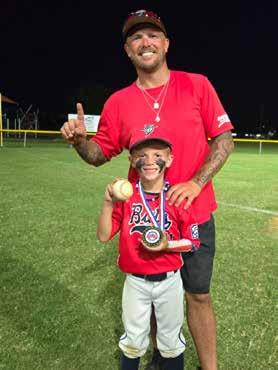

I was disillusioned: Things could be so much better! What was wrong? After many years of struggle and many more years of training, I learned this: The best technical and process-only plans, changes, and improvements won’t last if people don’t get what they need.
That’s why our work today considers both sides of the equation: tasks, tools, and systems, as well as people, relationships, and cultures. Think about it: When people don’t get what they need – like security, belonging, or respect – they can feel worried, fearful, disconnected, devalued, incapable, unworthy, and unhappy.
And then what happens? You already know. People disengage. Teams fight. Projects fail. Organizations shrink. The change you dreamed of … planned for … and worked toward is not sustainable.
At New Horizon Strategies, we’re out to change all that. Because once people have what they need, they’re able to release their full potential fully and freely. That’s where courage, innovation, and creativity happen – and where we can have the biggest impact on the world around us.
Laurie was honored to host some of her very first executive coaching sessions at the BAHEP offices thanks to the kindness and vision of former President Bob Mitchell. Over a decade later, New Horizon Strategies joined BAHEP thanks to encouragement from the current president, Brian Freedman.
Since joining BAHEP in 2024, New Horizon Strategies has made a wealth of contacts with colleagues and friends to create collaborative connections. New Horizon Strategies is honored to facilitate the BAHEP staff for their retreat in July 2025. We’re already working with the Small Business Committee, Energy Committee, Healthcare Committee, and Aerospace Committee. Thank you, BAHEP, for your vision and dedication to helping the businesses in our community thrive.

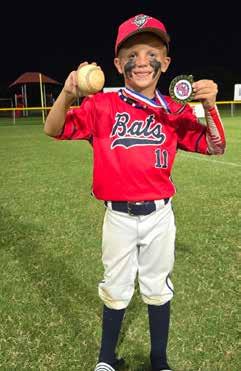
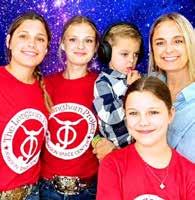

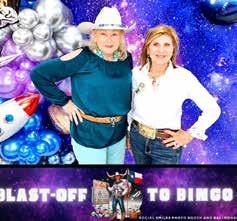




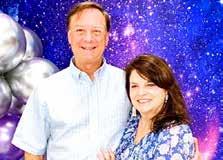





Richard Miller was born and raised in the Clear Lake area, where he attended Clear Creek High School. He later headed to Sam Houston State University, majoring in general business and joining the Sigma Chi Fraternity.
It was there he met his future wife, Jana, who was a little sister in his fraternity. After marrying in 1987, the two settled in Seabrook, Texas, where Richard launched his career in the family’s marine distribution business.
Under his leadership, he transitioned the company from focusing on leisure marine and domestic sales to a broader, global scope, specializing in offshore drilling, shipping, and government contracts. His vision and strategic direction have helped the company grow into a leader in the commercial marine sector.
Throughout his career, Richard has been highly active in industry leadership roles. He served as President of the Distributor Advisory Council for Parker Hannifin Racor and also contributed to the Distributor Advisory Council for ITT Jabsco. Additionally, Richard was a member of the Board of Directors for the Houston Boat and Trade Association, helping shape the direction of the marine industry in the region.

Richard’s ties to the Lunar Rendezvous Festival run deep. His family’s involvement dates back to 1966, when his mother volunteered alongside founder Maggie Plumb DeNike.
In 1968, at just 18 months old, Richard and his twin sister took home the title of Lunar Bathing Beauty Contest winners. The family tradition carried on: two of his sisters served as Princesses in 1970 and 1983; his daughter, Cameron, was Queen in 2006 and chaired the Fashion Show last year; his son, Trey, was Captain in 2009; and in 2015, his wife, Jana, chaired Lunar Rendezvous Festival’s 50th anniversary and remains involved in the festival as a current member of the Advisory Board.
Today, Richard and Jana call Kemah home, where they are long-time members of Lakewood Yacht Club. They enjoy traveling, boating, and — best of all — spending time with their granddaughters, Camilla and Claira, who live just three houses down.
Richard is deeply honored to serve as the Lunar Rendezvous King for the Festival’s 60th anniversary — a celebration that feels like a full-circle moment for his family.
ongratulations to the Lunar Rendezvous Festival on an outstanding White Linen Dining Night 60th Anniversary Celebration at Pier 6. Chair Kristy Brown and Co-Chair Ann Wismer left no detail unturned. Thanks to the generosity of the Bay Area over $130,000 was raised while having fun.















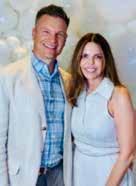


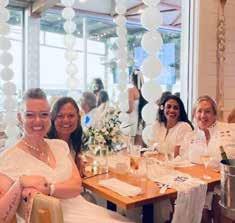


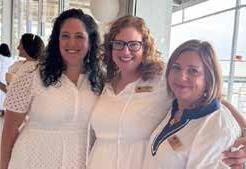






League City, Seabrook and Space Center Rotary and Clear Creek


CCISD swears in Board Members Jessica Czeska and newly elected Rebecca Lilley



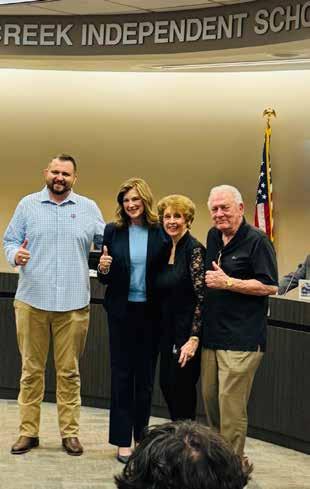





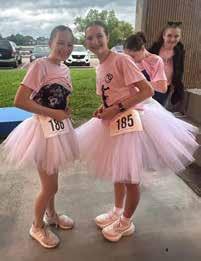
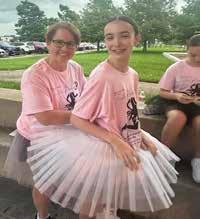




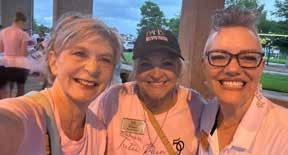


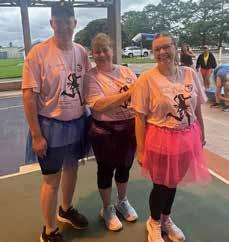

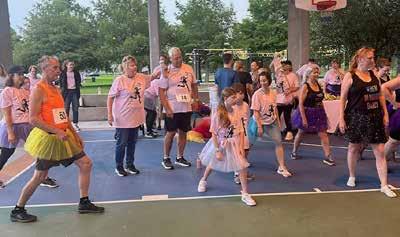



Come see us at Bay Area Pet Adoptions! We are looking for our Forever Home!

Meet Chip, a 7-month-old puppy who’s as yummy as a peanut butter cookie. His nose makes us sure it is meant to be topped with a Hershey’s kiss. Sweet, a little melty, and totally irresistible, this boy is as lovable as he looks. He’s spent a week in foster and was good with their kids, cool with their cats, and made fast friends with their dogs. His playful spirit, heart full of snuggles, and clumsy puppy charm is sure to keep you laughing. Equal parts lovebug and goofball, Chip is always ready for a cuddle, a game, or a nap in the most inconvenient spot possible. He’s not just a good boy—he’s everyone’s new favorite sidekick.


Introducing Bruno Mars. This boy is 4 years old. He may not sing, but he sure knows how to play with toys. He’ll run with them, play tug of war with them, chase them, roll with them, or just hold ‘em. He even gathers them up - or at least that what he says he’s doing. We know he’s really hoarding them. Bruno is a handsome boy who loves attention, gets along with other dogs, and is just plain fun, fun, fun. Looking for a happy guy with tons of personality? Check out Bruno Mars.

Jelly Bean is is a 1 year old and the last little Easter surprise still waiting for her forever home. She’s determined to make it worth the wait! Born at the shelter last year on Easter, this adorable girl has watched all her siblings and even her mom hop off to new families—now it’s her turn! She might play it


Fanta & Sunkist
Hello, we’re Fanta & Sunkist! We’re full of curiosity and bravery. We absolutely love each other; chasing each other, cuddling each other and even eating together! Give us a comfy bed and we’ll curl up next to someone who will give us the attention we crave. I mean, what’s better than the love of one cat? Two of course!! Come meet us and find out we’re double the love and double the fun!!




Meet Sadie Star, a petite 8-year-old beauty with a brindle coat that looks like it was painted by a very talented (and slightly whimsical) artist. At just 12 pounds, she’s easy to carry—but more importantly, easy to love. Sadie may start off a little shy, preferring to quietly observe the world from a safe distance, but give her a little time and patience, and you’ll find yourself with a loyal sidekick who’s always one step behind you (and possibly judging your snack choices). She’s the kind of gentle soul who won’t demand constant attention, but will quietly steal your heart—and probably your favorite blanket, too.
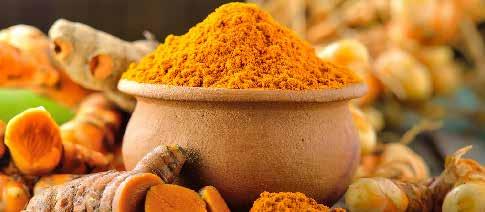
Each season of the year we have reasons to reboot our well intentioned healthy new year's resolutions. Now more than ever we need to be monitoring our health from the inside and out to stay healthy. If there is one area that should be on our reboot priority list, it is our gut health.
YOUR GUT AND BRAIN CONNECTION
Your gut is the lining of your gastrointestinal (GI) tract, which is teeming with over 100 million neurons and nerve endings that functionally acts as a second brain
. The gut also hosts a whole ecosystem of bacteria and other “microbiota” that when not in balance wreaks havoc with everything from your ability to make good decisions, your mood and especially your metabolism.
YOUR GUT AND MENTAL PERFORMANCE
The food we habitually eat has a significant impact on our cognitive attention to complete even the most mundane tasks. This is because a diet that’s high in sugar and ultra-processed foods can cause dysbiosis - an imbalance of all the microbiota in your GI tract – which can lead to both systemic inflammation and central nervous system inflammation.
And because communication between your gut and your brain is “bi-directional” through the gut-brain axis, that inflammation can lead to the mental sluggishness we attribute to brain fog. In fact, a recent study from the University of Birmingham’s Centre for Human Brain Health found that, “. . . people with systemic inflammation may have to exert more cognitive effort to achieve the same level of attentionrelated performance as those with less inflammation.”
This is especially concerning when dysbiosis is present because this condition can often precede the appearance of clinical symptoms for certain neurodegenerative diseases.
INTRODUCE YOUR GUT TO THE BENEFITS OF TURMERIC
Turmeric supports the gut’s anti-inflammatory response by blocking production of proinflammatory cytokines, tempering both acute (initial local response) and chronic (on-going systemic) inflammation in the gut and throughout the body.
However, because of the size of the turmeric curcumin molecule, it is usually metabolized too quickly to get the full therapeutic benefit or “bioavailability” at a steady rate of effectiveness. And while black pepper or piperine helps you absorb more of the benefits of turmeric it can further irritate your GI tract.
To mitigate potential adverse effects of absorption enhancers and get the full therapeutic benefits of turmeric curcumin, consider using “super micronized” turmeric. Nuvothera, a super micronized whole-root, turmeric supplement, uses a process that reduces the size of the turmeric molecule so that it is easily absorbed without the need for chemical absorption enhancers like piperine and has been clinically demonstrated to increase anti-inflammatory and anti-oxidant potency 100 times greater than other brands.
YOUR GUT AND YOUR MOOD
Does your desire to work out come in shortlived bursts of motivation? Is the thought of a
leaner, healthier you not enough of a reward to get you to going? That’s because feeling sluggish is an “entire mood” as the saying goes. Your mood and sense of well-being are regulated by the neurotransmitter serotonin and 90% of the serotonin in the body is produced by cells in the gut lining. But, a 2015, study at Caltech found that these cells appear to depend on their interaction with gut microbiota to synthesize a large amount of the serotonin produced by the gut. Similarly with dopamine, the gut produces almost 50% of this neurotransmitter in your body. Dopamine also supports mood but more importantly, it regulates the motivation behaviors and reward pathways that propel you to start and complete tasks. It follows then, given the bi-directional communication between your gut and your brain, that any negative mood can be “ the cause or the product ” of an imbalance in your gut microbiota.Through digestion, the gut converts turmeric curcumin into metabolites unleashing the anti-oxidant properties of turmeric. In this capacity, turmeric works to prolong the effects of neurotransmitters, reducing free radicals by inhibiting the production of monoamine oxidase (MAO) enzymes which break down serotonin and dopamine via catabolization.
YOUR GUT AND YOUR METABOLISM
It is commonly accepted wisdom that once you hit a certain age, your metabolism slows down. While there is real evidence of this as a truth, the common western diet of ultraprocessed food is also a culprit. And not solely due to the high caloric count. The food you eat and the medicine you take determines which bacteria thrive in the gut.
IMPROVE YOUR GUT HEALTH WITH TURMERIC
The easiest way to improve our gut health is to habitually support our diet with noninflammatory foods and quality nutritional supplements.Nuvothera’s Turmeric Curcumin helps balance the microbiome that is your gut and that has a positive effect on all the areas of your health. Because when your gut is happy, all of you is happy.
What Can Cause Lower Back Pain?
*Injuries, accidents, chronic medical conditions, and degenerative diseases can all cause lower back pain.*Some examples of the most common causes of lower back pain are:
*Sports injuries – muscle strains and sprains
*Poor posture
*The stress placed on the lower back from a sudden movement such as a hit or a fall
*Improperly lifting heavy objects
*Twisting the wrong way when lifting an object
*Compression fracture
*Spinal deformity
*Osteoarthritis
*Slipped or bulging disc
*Lumbar herniated disc
*Degenerative disc disease
*Joint dysfunction
*Other less common causes of lower back pain include: tumors, autoimmune diseases such as rheumatoid arthritis, lupus or Crohn’s disease, and infections.
Discovering the cause of your lower back pain is important because it helps you determine how to treat the pain. Some causes of lower back pain, such as osteoarthritis, joint pain, and muscle sprains or strains respond well to natural
remedies. Other causes of lower back pain, such as compound fractures or spinal deformities may need additional medical treatment to relieve your pain and discomfort.
A doctor can help you determine the cause of your lower back pain and explore which natural remedies may prove the most effective at helping you find pain relief.
Symptoms of Lower Back Pain
There are very specific symptoms that occur when you experience lower back pain. Some of the most common symptoms of lower back pain include:
*Dull ache or pain – this type of pain is typically described as a dull ache that never fully goes away
*Sudden sharp pain – sudden sharp pain typically occurs when you experience trauma or severe damage to the lower back
*Severe muscle spasms
*A dull ache that travels to the pelvis or hips
*Tingling, stinging, or numbness that feels as if it starts in the lower back and travels down the backs of your legs to your feet
*Pain or aches that seem to get worse after not moving for prolonged periods such as when sitting at work or while sleeping
*Dull pain that is relieved when shifting or changing positions – for example, you may have lower back pain when lying down flat, but if you lay on your side or raise your knees the pain goes away
*Pain that is severe in the morning but tends to get better as the day goes on
*Lower back pain symptoms can vary in intensity. Sometimes the pain can be mild while other times it can be so severe that it prevents you from taking part in day-to-day activities.
Natural Remedies for Lower Back Pain and Inflammation
From the comfort of your own home you can try some of the following natural remedies which may help to relieve pain and inflammation in the lower back:
1)Change your routine. 2)Try to avoid sitting for prolonged periods. 3)Make adjustments to your posture. Try to adjust your back, shoulders, and neck so they are properly aligned. This will help take some of the stress off your spine which may reduce pain and inflammation.
4)Change or rotate the type of activities or exercise you do. Changing the type of activities or exercise you engage in will help you avoid overworking certain joints and muscles. If the joints and muscles become fatigued from overuse, it puts you at risk of injuring your back.
5)Practice yoga – yoga can help you stretch and strengthen the muscles and joints. It also helps with spinal flexibility. A flexible spine is more resistant to injuries that can cause you to experience pain and discomfort.
6)Heat therapy, 7)Cold compresses, 8)Practice meditation to help you relax your body and muscles, 9)Take a natural supplement for antiinflammation, 10)Exercise, 11)Lose weight, 12)Make changes to your diet. 13)Try to incorporate more anti-inflammatory foods into your diet.
Exercises to Help Lower Back Pain
Wondering how to get rid of lower back pain fast? The fastest way is to start exercising. There are specific exercises that can help you stretch and strengthen your back. By strengthening and stretching your lower back, you can reduce pain and inflammation.
The following are simple exercises you can do daily that may help you find relief from lower back pain.
Knee-to-Chest Stretches
*Lie on the floor
*Bend both knees so your feet are flat
*Take both hands and gently pull one knee to your chest. *Stop pulling your knee when you start to experience slight tightness in your back. You should not experience any pain or discomfort. If you do, stop this stretch immediately.
*Keep your knee to your chest for five seconds then return so both knees are bent and your feet are on the floor.
*Do the same thing with the opposite leg.
*Repeat this with both legs two to three times.
Lower Back Rotational Stretches
*Lie on the floor with both knees bent. Your feet should be flat on the floor and your arms should be out to the side.
*Gently lower your legs to one side. Make sure you keep your knees together. *Hold this stretch for five to ten seconds then return to your starting position. *Repeat this movement to the other side. *Repeat this stretch two to three times for each side.
Cat Stretch
*Start by kneeling on the floor with your hands on the ground. Your knees should be about hipwidth apart. *Gently try to arch your back. This can be done by slowly pulling your belly button upwards. *Hold this position for a few seconds. *Slowly start to relax the muscles in your back. While relaxing your muscles, you will start to lower your abs towards the ground. *Slowly return towards your starting kneeling position. *Repeat this same stretch three to five times. If you find these exercises and stretches difficult, you can try something easier – walking. *Walking helps increase blood flow to the body which helps reduce inflammation. It can also help stretch and strengthen your muscles and joints.
The first thing people think of to help reduce inflammation in your back is an NSAID. NSAIDs, such as ibuprofen, work with your body to chemically reduce inflammation. While NSAIDs can help reduce pain and inflammation, they come with dangerous side effects that can dramatically impact your health.
If you want to reduce inflammation safely without worrying about dangerous side effects, you can take a turmeric supplement. Turmeric is a natural anti-inflammatory that, when taken properly, can reduce pain and inflammation but without all the harmful side effects.
Best Anti-Inflammatory Turmeric Supplement for Lower Back Pain and Inflammation
What is the fastest way to relieve lower back pain? Taking a good turmeric anti-inflammatory supplement from a reliable manufacturer.
What makes a good turmeric antiinflammatory supplement? A good turmeric anti-inflammatory supplement is one that not only is designed to be quickly absorbed by the body but one that has maximum potency. A turmeric supplement that combines maximum absorption and maximum potency will help make sure you see the best results.
Nuvothera’s Super-Micronized Turmeric Curcumin Supplement is considered by many back pain sufferers to be the best antiinflammatory supplement It is the best because very specialized, advanced micro-particle technology was used to manufacture the supplement. This specialized technology creates a supplement that your body can quickly and effectively absorb.
Other reasons why Nuvothera SuperMicronized Turmeric Curcumin Supplement is considered the best anti-inflammatory include:
*All ingredients are natural
*All ingredients that are used have been clinically tested to determine their effectiveness at reducing pain and swelling
*No chemical enhancers or black pepper, which can cause unpleasant side effects, are used to help enhance the absorption
*A supplement is water-soluble for maximum potency
When you take Nuvothera Super-Micronized Turmeric Curcumin Supplement, you are delivering high-quality natural anti-inflammatory compounds to the body. Direct delivery of the anti-inflammatory compounds to the damaged cells helps decrease pain and inflammation by quickly starting the healing process.
Try combining a few of these natural remedies, such as stretching, exercise, and turmeric supplements like Nuvothera’s SuperMicronized Turmeric Curcumin Supplement, and you will soon find relief for your back pain.
Order your Nuvothera Turmeric Supplement today by scanning the QR Code.

may be fast on the track, but he takes his time with patients.
By Sean Kelley
Patients of Dr. John Cottingham, a family physician in Webster, would like you to know one thing about him:
Dr. Cottingham is faster than your doctor.
This is true – especially on the track. “I compete as a masters track athlete in the 60-meter during the indoor season, and 100-meter in the outdoor season,” Cottingham says.
Dr. Cottingham, a lifelong Bay Area Texan, began training as a sprinter six years ago, as a way to marry his interest in sports, exercise and medicine. A high school football player and power lifter at the University of Texas, Dr. Cottingham has always been active in sports and fitness. But when he became a physician and needed a way to really bring all the components of health together, he focused on running. At first, he ran half marathons but found them to be painful and inferior to sprint training. “I would hurt for a while after a very long run. I had a lot of low-back pain,” Cottingham says.
Then one day he was speaking to a friend at the gym where he lifted weights and the friend asked him why he was running distance if it caused so much pain. “Then, he asked me, ‘Do you want to look like the guy that won the marathon in the Olympics, or do you want to look like the guy in the Olympics that won the 100-meter?’ It was pretty easy to choose sprinting after that,” Cottingham says.
Sprinting also ties his interest in sports to his profession: medicine. “When you run, you have to be fit, you have to eat well, you have to sleep regularly. All those things give me structure to build my personal health plan around.”
That’s the same approach he takes in his MDVIPaffiliated practice. Except where Dr. Cottingham is fast on the track, he takes all the time he needs with his patients. He’s methodical not rushed.
Unlike most primary care physicians, Dr. Cottingham sees fewer patients. He had a traditional primary care practice until the end of 2023 where he would see 20 to 25 patients a day. “Often, I would see even more,” he says. He was always sprinting, trying to get through the day and solve as many problems as possible. “It was very difficult to be able to address each patient's individual needs the way I really wanted to do it and the way I was trained to.”
But in his new MDVIP-affiliated practice, Dr. Cottingham sees 8 to 10 patients a day, offering longer appointments and a deeper focus on preventive care. He has more time to work with his patients, and while they’re not all destined to be sprinters, he’s able to meet them where they are and help them achieve their health goals.
“They get all of me. They get all of my attention, and we're never in a hurry. We're always on time,” Dr. Cottingham says. Because he sees fewer patients, he’s able to offer conveniences that most primary care doctors can’t, including same- and next-day appointments. Patients can reach him during the day for routine questions and follow-ups. And they can also reach him after hours and weekends for urgent needs.
This is how he envisioned practicing medicine when he decided to leave his career in finance and become a doctor. Dr. Cottingham started school at the University of Texas but came back to the University of Houston to finish a degree in business. Then he worked in banking for more than a dozen years. But something didn’t seem right. “I loved banking, but I didn't love it as much as I thought, and I wanted to love whatever it was I was doing. So, the idea began to kind of well up at me — my passion for sports, physical fitness, science — all those things could probably be well combined if I were a physician.”


Dr. Cottingham began taking night classes to get his prerequisites out of the way, took the MCAT and then got accepted to the University of Texas, Medical Branch in Galveston. That was 20 years ago, and he’s been practicing in Webster since.
In his new family medicine practice, Dr. Cottingham is focused on prevention. Each year patients take part in the MDVIP Wellness Program, which includes advanced testing and diagnostics not typically offered in primary care practices. Patients pay an annual fee for the program.
“Through the testing we do, we gather more empirical data than most patients have probably experienced before,” he says. “It's important data and meaningful data.” And because he sees fewer patients, Dr. Cottingham has time to develop personalized wellness plans for each patient based on that data. He can focus on nutrition, fitness, sleep, stress and disease prevention.“This MDVIP program is really for everybody, whether you're in your 20s, middle age or older. I have patients in their 90s,” Dr. Cottingham says. “Ultimately, it's for people who want to be involved with their health and be proactive. Prevention is so much more effective than treating a disease.”
Patients in MDVIP-affiliated practices experience better health outcomes compared to those in traditional primary care, according to 11 peer reviewed, published studies. They experience 70% fewer hospitalizations, utilize emergency rooms and urgent care less often, and have better control of chronic conditions like type 2
diabetes, hypertension and high cholesterol than patients in traditional primary care practices. At risk patients experience 12% fewer heart attacks and strokes.
“If you can get ahead of disease, find the risk before it becomes disease, then you have a really good chance to mitigate its effects on your health and your life,” Cottingham says. Obviously, that’s a much better strategy.” And where most patients and doctors are speeding through health checkups as fast as they can, prevention is more of a marathon rather than a sprint. At Dr. Cottingham’s practice, patients have time to slow down and focus on making meaningful change, which can affect their health for years to come.
“We operate in a very relaxed, unhurried environment. We have time to focus on prevention, which is a long-term strategy for health,” Dr. Cottingham says.
Learn more about Dr. Cottingham’s practice by visiting mdvip.com/bayarea or calling 281-270-9170. He currently has openings in his practice.
JULY SCHEDULE
7-1 HENRY GARCIA (MUSTANGS) 1PM
7-1 JACOB ECHENRODE
5:30PM
7-2 BRYAN SHAYNE
5:30PM
7-3 JEREMIAH 5:30PM
7-4 TONE SALINAS
6:30PM
7-5 JOSH WAGER 1:30PM
7-5 BRETT AXELSON
7-6 RANDY MASSEY
1:30PM
7-6 MARK LUM 5:30PM
7-7 CHAD WARE 5:30PM
7-8 TONE SALINAS
5:30PM
7-9 CHAD WARE 5:30PM
7-10 JACOB ECHENRODE
5:30PM
7-11 MARK LUM 5:30PM
7-12 RYAN GUIDRY
1:30PM
7-12 BRUCE COURTNEY
6:30PM
7-13 JOSH WAGER
5:30PM
7-14 ZACK TATE 5:30PM
7-15 CHRIS HARDY
5:30PM
7-16 JEREMIAH 5:30PM
7-17 TONE SALINAS
5:30PM
7-18 BRYAN SHAYNE
6:30PM
7-19 MARK LUM 1:30PM
7-19 FPO 6:30PM
7-20 RANDY MASSEY
1:30PM
7-20 CHAD WARE 5:30PM
7-21 RYAN GUIDRY
5:30PM
7-22 CHAD HARDY 5:30PM
7-23 JASON ECHENRODE
5:30PM
7-24 JEREMIAH 5:30PM
7-25 BRUCE COURTNEY
6:30PM
7-26 JOSH WAGER
1:30PM
7-26 BRETT AXELSON
6PM
7-27 MARK LUM 1:30PM
7-27 BRYAN SHAYNE
5:30PM

7-28 RANDY MASSEY
5:30PM
7-29 FPO 5:30PM
7-30 JEREMIAH 5:30PM
7-31 TONE SALINAS
5:30PM
AUGUST SCHEDULE
8-1 BRYAN COURTNEY 6PM
8-2 DAVID SCHWOPE 1PM
8-2 FPO 6PM
8-3 BLAKE ANDERSON
1:30PM
8-3 ZACK TATE 5PM
8-5 CAR SHOW 10AM
8-6 TONE SALINAS 5PM
8-7 BRYAN SHAYNE 5PM
8-8 JACOB ECHENRODE 6PM
8-9 RANDY MASSEY 1PM
8-9 BRETT AXELSON 6PM
8-10 JEREMIAH 1:30 PM
8-10 DAVID SCHWOPE 5PM
8-13 CHRIS HARDY 5PM 8-14 ZACK TATE 5:30PM


8-15 BRUCE COURTNEY 6PM
8-16 JEREMIAH 1:30PM
8-16 MARK LUM 6PM
8-17 TONE SALINAS
1:30PM
8-17 RANDY MASSEY 5PM
8-20 BRYAN SHAYNE 5PM
8-21 TONE SALINAS
5:30PM
8-22 FPO 6PM
8-23 DAVID SCHWOPE 1PM
8-23 BRETT AXELSON 6PM
8-24 BLAKE ANDERSON 1:30PM
8-24 ZACK TATE 5PM
8-27 MARK LUM 5PM
8-28 BRYAN SHAYNE 5PM
8-29 BRUCE COURTNEY 6PM
8-30 RANDY MASSEY 1PM
8-30 JEREMIAH 6PM
8-31 CAR SHOW
8-31 TONE SALINAS
1:30PM
8-31 JACOB ECHENRODE 5PM


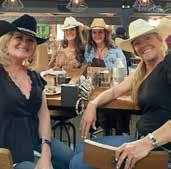




PREPARE SHRIMP:
By Robyn Weigelt
INGREDIENTS
1 lb Cooked Shrimp
1 -2 Avocado
1 cup grape tomatoes
2 tsp garlic
1 lemon
1 lime
1/4 cup chopped cilantro
1 tsp sweet paprika
Olive Oil
Salt and Pepper
2 garlic cloves diced
1/2 cup butter
1 loaf French bread or Sourdough bread
In large bowl mix cleaned shrimp with paprika,pinch salt and pepper
Heat olive oil in a large skillet over medium heat, add the shrimp in a single layer. 2 minutes per side until pink and a light crisp. Add garlic and butter -Juice of 1 lemon cook for another 1-2 minutes stirring occasionally. Remove from heat set aside .
Mash the Avocado in a medium bowl with a fork until smooth and chunky.
Add squeezed lime juice salt and pepper to taste.
Preheat the oven to 375
Slice the loaf of bread arrange on a baking sheet
Brush both sides with olive oil, salt and pepper
Toast in oven 7-10 minutes until golden brown. Let cool
MIXING INGREDIENTS:
Assemble the Crostini:
Spread generous amount of mashed avocado on each crostini
Top with shrimp 2-3 per crostini
Garnish with chopped grape, tomatoes, and cilantro.





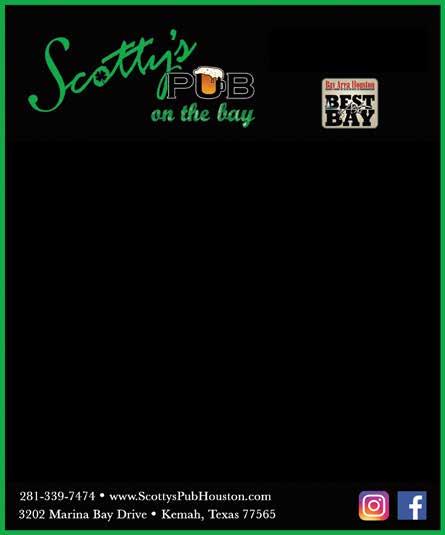
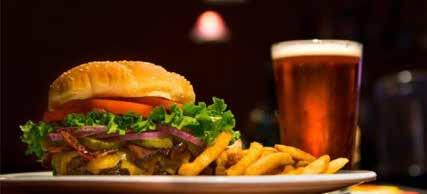





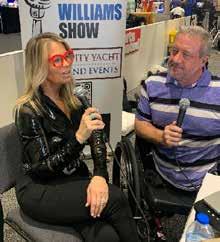



By Pastor Brad Heintz
There is a new social phenomenon that is sweeping our community and that is the hiding and finding of “Little Jesus” These rubber cartoon images of Jesus Christ are being hid by believers as a way to encourage and connect with people. Some think it’s cute. Some think it’s silly. Others may not approve. What do you think?
A few months ago, a member of Living Word, who just thought they were cute and didn’t know they were “A Thing” and handed me one of these and said, “Everyone needs a little Jesus in their lives!” A big grin came over my face and I said, “We sure do!”
From there the congregation has just embraced this creative way to share a little bit of their faith. Even our BIG VBS adopted the idea that wherever you go this summer – share a little Jesus literally and figurately. Whether you think it is cute, silly (or another adjective you want to put here), it does beg the question: Does everyone need a little Jesus in their lives?
For me a little is a lot when it comes to the Lord. (I think there is an old gospel song that sings that.) And how much is really needed?

I mean. if the Jesus of the Bible was able to take five loaves and two fish and feed 10,000 households, then a little Jesus can go a long way Also, when I give him a little time at the beginning of the day in prayer, does it not seem like the next 23 hours goes much better? Or at least I’m less stressed out then if hadn’t given him any time. When you think of it Jesus is the greatest of all and if I got even a little of him it will go a lot farther than anything else in my life.
“Better to have little, with fear for the Lord, than to have great treasure and inner turmoil.” Proverbs 15:16 (New Living Translation)
www.BIGVBS.org #ShareLittleJesus Facebook Group: Share A Little Jesus
Pastor Brad Heintz is the founding pastor of Living Word Church in Taylor Lake Village, Texas, a vibrant family-style, non-denominational gathering of believers who take a pure, simple and real approach to faith and life. www.LWCBA.org


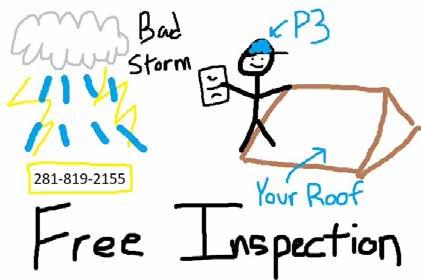


By Sumer Loggins
At NASA’s Johnson Space Center in Houston, the next generation of lunar explorers and engineers are already hard at work. Some started with sketchbooks and others worked with computer-aided design files, but all had a vision of how design could thrive in extreme environments.
Thanks to NASA’s Student Design Challenge, Spacesuit User Interface Technologies for Students (SUITS), those visions are finding their way into real mission technologies. The SUITS challenge invites university and graduate students from across the U.S. to design, build, and test interactive displays

integrated into spacesuit helmets, continuing an eight-year tradition of handson field evaluations that simulate conditions astronauts may face on the lunar surface. The technology aims to support astronauts with real-time navigation, task management, and scientific data visualization during moonwalks. While the challenge provides a unique opportunity to contribute to future lunar missions, for many participants, SUITS offers something more: a launchpad to aerospace careers.
The challenge fosters collaboration between students in design, engineering, and computer science—mirroring the teamwork needed for real mission development.

Keya Shah, now a softgoods engineering technologist in Johnson’s Softgoods Laboratory, discovered her path through SUITS while studying industrial design at the Rhode Island School of Design (RISD).
“SUITS taught me how design can be pushed to solve for the many niche challenges that come with an environment as unique and unforgiving as space,” Shah said. “Whether applied to digital or physical products, it gave me a deep understanding of how intuitive and thoughtfully designed
solutions are vital for space exploration.”
As chief designer for her team’s 2024 Mars spacewalk project, Shah led more than 30 designers and developers through rounds of user flow mapping, iterative prototyping, and interface testing.
“Design holds its value in making you think beyond just the ‘what’ to solve a problem and figure out ‘how’ to make the solution most efficient and useroriented,” she said, “SUITS emphasized that, and I continually strive to highlight these strengths with the softgoods I design. Shah now works on fabric-based flight hardware at Johnson, including thermal and acoustic insulation blankets, tool stowage packs, and spacesuit components.
“There’s a very exciting future in human space exploration at the intersection of softgoods with hardgoods and the digital world, through innovations like smart textiles, wearable technology, and soft robotics,” Shah said. “I look forward to being part of it.”

For RISD alumnus Felix Arwen, now a full-time softgoods engineer at Johnson, the challenge offered invaluable hands-on experience. “It gave me the opportunity to take projects from concept to a finished, tested product— something most classrooms didn’t push me to do,” Arwen said.
Serving as a technical adviser and liaison between SUITS designers and engineers, Arwen helped bridge gaps between disciplines—a skill critical to NASA’s team-based approach.
“It seems obvious now, but I didn’t always realize how much design contributes to space exploration,” Arwen said. “The creative, iterative process is invaluable. Our work isn’t just about aesthetics—it’s about usability, safety, and mission success.”
Arwen played a key role in expanding RISD’s presence across multiple NASA Student Design Challenges, including the Human Exploration Rover Challenge, the Micro-g Neutral Buoyancy Experiment Design Teams, and the Breakthrough, Innovative, and Game-changing Idea Challenge. The teams, often partnering with Brown University, demonstrated how a design-focused education can uniquely contribute to solving complex engineering problems.

Both Arwen and Shah remain involved with SUITS as mentors and judges, eager to support the next generation of space designers.
Their advice to current participants? Build a portfolio that reflects your passion, seek opportunities outside the classroom, and do not be afraid to apply for roles that might not seem to fit a designer.
“While the number of openings for a designer at NASA might be low, there will always be a need for good design work, and if you have the portfolio to back it up, you can apply to engineering roles that just might not know they need you yet,” Arwen said.
As NASA prepares for lunar missions, the SUITS challenge continues to bridge the gap between student imagination and real-world innovation, inspiring a new wave of space-ready problem-solvers.
“Design pushes you to consistently ask ‘what if?’ and reimagine what’s possible,” Shah said. “That kind of perspective will always stay core to NASA.”
Are you interested in joining the next NASA SUITS challenge? The next challenge will open for proposals at the end of August 2025.
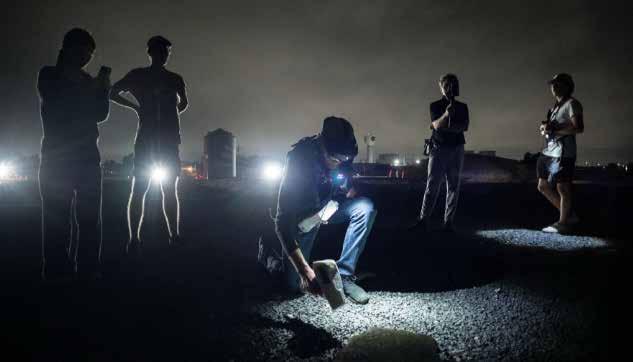






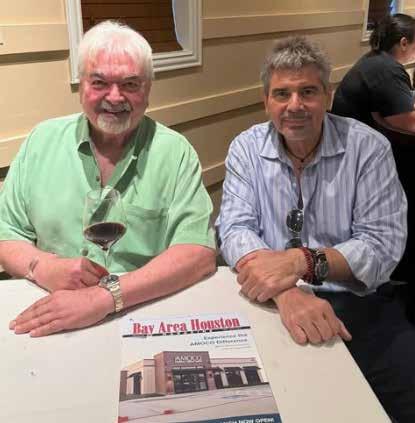


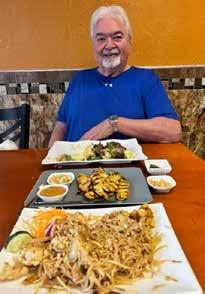



By Don Armstrong
Vacation plans are in place but it’s time for something new. We drove a couple of luxury SUVs that you’ll want to check out. Both are built offshore so you still may find one on the lot that doesn’t carry a fattened tariff with it.
The redesigned Nautilus has a conservatively sophisticated exterior design that’s fitting for a road trip to Aunt Mary’s or a Saturday night appearance at the country club. Optional twotoned paint, a large, integrated grille and body side sculpting are beautifully done.
Open the driver’s door and a sweeping display draws the eye to the bottom of the windshield, pillar to pillar – it’s stunning. A smaller screen sitting atop the center stack controls the multitude of displays above.
Seating for 5 is typical among this midsize


Lincoln’s competitors and there is adequate legroom for second-row passengers. It’s supportive and comfortable with unique design elements, colors, and adjustability.
Power is delivered by a 2.0-liter, 4-cylinder engine to a full-time all-wheel drive system. Horsepower is rated at 250 and shifted by an 8-speed automatic transmission, leading to a combined mileage rating of 25.
The ride is comfortably controlled and guiding it at 75 mph becomes a second thought. Handsfree driving is standard equipment on the Nautilus.
Pricing starts at reasonable $53,940.

When anyone mentions a “coupe,” most folks think of a car with 2-doors. That is not the case with the Genesis GV80 Coupe, a 4-door luxury SUV with a fastback design, or coupe “look” to it. This is the same vehicle as the GV80, sans the 3 rd row of seats and a lowered rear roof line. The look is formidable.
Like Lincoln, the interior of the 80 Coupe is nothing short of opulent. From its elongated, single digital display panel to textured control surfaces and materials, you’ll be wowed by the attention to detail. Interior lighting is subtle but welcome for those after sunset trips to your favorite Bay Area bistro.
For auto aficionados, ride quality becomes part of the buyers overall decision-making process and for most, Genesis doesn’t disappoint, controlled yet compliant describes the experience.
The GV80 Coupe is motivated by an optional twin-turbo V-6 connected to an electric booster that delivers a whopping 409-horsepower. Since you’re buying a new horse, you might as well get the thoroughbred.
Pricing begins at $79,950.

Acouple of weeks ago, a trio of desperados (my wife, myself and my best friend) were on yet another pilgrimage to Luckenbach. This time we took an indirect route so we could stop for a barbecue lunch at Salt Lick BBQ in Driftwood. While the other two had the little “single meat” plates, I went with the manly option and had “Thurman’s Choice,” which was the Texas Trinity (brisket, ribs and sausage).
Somehow, in spite of a plate full of heaven in front of us and full mouths, we did manage to carry on some semblance of a conversation. Of course, the topic was barbeque. We all agreed most pitmasters were good at their craft, but there were a few spread across Texas that were truly artists—and an even more select few that must be recognized as producing the highest form of the art. Our consensus was that Tootsie Tomanetz at Snow’s in Lexington, Aaron Franklin in Austin and the absolute geniuses doing the cooking at Cooper’s in Llano and Red River here in League City are in that category.
Any time you come to such an important judgment, and do it so decisively and unanimously, there always follows a bit of silence as you ruminate about the magnitude of what you just accomplished. But a good barbeque dinner can’t last forever without causing discomfort, and neither can silence. It finally was broken when my friend asked, “Do you ever wonder why we are here?”
I, of course, gave the obvious answer. “For the barbecue, man. For the barbecue!”
He gave me the look. We all know the look. And then he said, “I mean, why are we here on earth?”
Did you ever ask yourself that question? I’m not that great at getting into other people’s minds, but I strongly suspect that virtually everyone has thought about that question at one time or another. It certainly has been a hot topic of discussion for the last several millennia of human existence. The subject was widely debated in
Ancient Greece, in most religions and even by more recent philosophers. the Greeks believed the reason we are here is earth-centered, that is, to maximize your quality of life in the here and now.
The Epicureans, for example, believed the ultimate purpose of life is to achieve a mindset that renders us free from upheaval and fear, and to avoid pain. The Stoics, on the other hand, while also looking for a life of tranquility and peace, believed it was achieved through living a virtuous life and accepting whatever happens in the world with equanimity.
Most major religions see it differently. We are here not to benefit now, but to work toward achieving a benefit in an afterlife. To the Hindu, our purpose here is to learn about the true nature of the universe and achieve the point of complete understanding so we can free ourselves from the cycle of reincarnation and attain a state of spiritual transcendence, or Nirvana.
Islam and the Judeo-Christian heritage both see life as an opportunity to live virtuously according to set rules. The whole idea is to do well here so you can get a promotion in the afterlife. Sometimes that includes living a selfless life where much of what you do is for the benefit of others. Mother Teresa might be the poster girl for this view.
More recently, other, non-religious philosophers have examined the issue with widely varying conclusions. To the Existentialists, humans are born without an “essence,” (identifying characteristics that constitute a human). Your purpose in life is to define yourself, that is, to discover and declare your essence, who and what you are. They believe once that is accomplished, your next task is to define your own sense of morality and then to live your life by that definition.
Nihilists agree with Existentialists about man being born without a human essence, but that is where the similarity ends. They believe there is no purpose, no point to life so we shouldn’t waste time and effort pondering the issue.
Richard Bach, the author of such delightful books as “Jonathon Livingston Seagull” and “Illusions”, argues that we were placed here for one reason alone—to have fun and be happy.
There is much to consider in all these different views of the purpose of life, but I have a different take. I think we are here precisely to answer the question “Why are we here?”—and then
By Michael Gos
to act on that answer.
If we start with the belief that God created man in his image and likeness, we need to look not at the essence of humans, but rather at the essence of God to find our answer. First and foremost, he is a creator. If man is indeed in the likeness of God, he must first be a creator. Whether we are writing, painting, woodworking, sculpting, designing buildings or raising children, I think we are only happy and fulfilled when we are in the process of creating or when sitting back and admiring something we have done. I think that second part is particularly important.
I can’t remember a time when I wasn’t writing. My first “story” was written when I was six, my first “book” at age seven. Writing is, and has always been, fulfilling for me. But there was always a problem. When I am done with a piece of writing, the fun is over. When it comes time to sit back and enjoy it, all I have to look at are a few books on a shelf and boxes of magazines in the closet. A painter can look at the result of his work, hanging on a wall, and enjoy it forever.
That is important. When I look at those books on a shelf, the only art I can see is the bookbinder’s art. While I will always write (I can’t be alive without it), I quickly learned I needed a second outlet. For me, that turned out to be landscape gardening. Now I can design it, Jill and I can build it, and most importantly, we can both enjoy the finished product and say, “We did that.”
Some may say this is not really a moral approach to life since creators are not exactly selfless. While they are self-motivated and self-sufficient, both great traits, they do tend to live for themselves. They are not exactly following the Mother Teresa model. Nevertheless, it is a happy and fulfilling life.
When all is said and done, I believe this is our true purpose on earth. We are here to create, and to enjoy our creation. The gentlemen at Salt Lick and the best barbecue artists in Texas obviously do both. And ours is a better world because of it.
